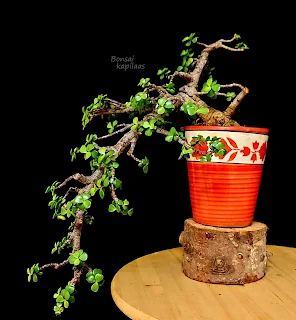Bonsai is an Art of Making Plants small and giving them a form of natural look to the plant. It's a skilled art and how Nature Plays a main role in shaping plants. Bonsai Art Plants acquire a Tree shape in the master's hands just like in Nature. We are trying to keep our Bonsai Plants as natural as a miniature form of Nature
Bonsais are divided into three groups depending on height are as
Big Bonsai
Medium Bonsai
Shohin Bonsai.
Sunday We had a Shohin Bonsai workshop. This time our topic is How to make Small Bonsais, taking care of them was demonstrated and practically explained in detail. Here Are all details of Small Bonsais. How many sizes are there and how to make them.
Actually, Bonsai is a small miniature tree, then shohin Bonsai is still a miniature form of Bonsai. Some of the world-renowned Bonsai artists have only Shohin Bonsai nurseries. Just like for Big Bonsais Many awards were there for small Bonsais.
Now we will see how to make a Beautiful Shohin Bonsai. Shohin Bonsai is generally divided into three categories depending on the height of the plant
1) Shohin Bonsai
The general height of this plant is 12 inches. Shohin Bonsai can be carried with a hand . This general rule is that Bonsai which is carried with a hand is called shohin bonsai.
2) Mame Bonsai ..
It is also called Bean Bonsai. The height Of this Bonsai is 6 inches. Mame Bonsai is a smaller Bonsai than Shohin Bonsai. It can also be carried by hand.
3) Shito Bonsai.
The height of this Bonsai is considered 3 inches. This Shito Bonsai is smaller than Mame Bonsai, it can be carried in a palm.
4) Keishi Bonsai
The height of that Bonsai is 1 inches. Kenshi is the smallest of shito and this Bonsai can be held on a finger.
Nursery Plants are always readily made into Bonsais. We can buy a plant from a nursery and reduce the height by cutting down the length of the plant and doing some pruning and wiring to give it a shape. Then some pruning and shaping make the plant a beautiful Mame Bonsai.
Names of Plants for Shohin Bonsai and Mame Bonsai.
The best plants are small-sized leaves plants because their small size plant looks small and attractive miniature Mame Bonsai. The leaves of Big leaves plants take time to reduce in size. Plants like peepal which have big leaves can also be made into Shohin Bonsais.
Buxus, Serissa foetida, Carmona, Jade, Ficus microcarpa, Adenium, Pomegranate, Bougain villea, Chinese Elm, Pine, Ginseng ficus, Premna.
Mame Bonsai soil: Mame Bonsai pots are very small, so they should have soil that can hold water and good fertile and good drainage for proper growth of roots and the plant. Peat moss holds moisture, cocopeat helps for good drainage and the garden soil provides organic matter for the plants to grow. The best composition is one part of the garden soil, one part of the cocopeat, and one part of peat moss.
Wiring and pruning a small Bonsai is challenging work because of its size. The clip and grow method is best suitable for most of the mame bonsais. There are very pretty creations of their small size and need lots of maintenance. All most all these Bonsais are growing in a small pot so once you water them within ten minutes water drains out and the soil becomes dry. If the soil is dry growth of the plant won't be proper. To maintain them properly keep all these plants in a shallow plate with pumice stones or brick pieces, and maintain a level of water halfway into the stones. another method is in a big pot put the Bonsai soil and keep the pants in the soil. In both Methods moisture from the down of the pot keeps mame bonsai cool. it helps the plant to grow healthily. Regular interval feralization is very important for these plants.
Here link is given to shape a Plant into Shohin Bonsai.
https://youtu.be/5YdmDB9VVJs




























































